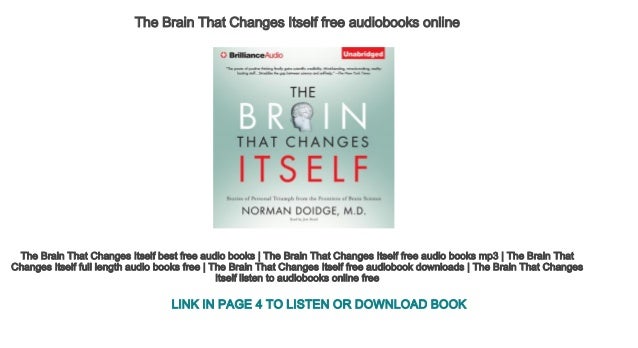
What are the benefits of neuroplasticity training?.

Train Your Mind, Change Your Brain by Sharon Begley Rewire Your Anxious Brain by Catherine Pittman and Elizabeth Karle Presence: Bringing Your Boldest Self to Your Biggest Challenges

Learned Optimism: How to Change Your Mind and Your Life Flow: The Psychology of Optimal Experience Mindsight: The New Science of Personal Transformation The Body Keeps the Score: Brain, Mind, and Body in the Healing of Trauma – by Bessel A. The Brain That Changes Itself by Norman Doidge Stimulating activities can change the structure of the brain. The sensations on her tongue were then redirected to the area in Schiltz’s brain that processed balance, rather than going where they normally went: to the sensory cortex, the area that processes touch.Īfter much practice with the device, a new pathway in Schiltz's brain was unmasked and strengthened, and she began to regain her balance on her own. The device, called an accelerometer, sent signals to a plastic strip containing electrodes, which had been placed on Schiltz’s tongue. That is, until one of the pioneers of neuroplasticity, Paul Bach-y-Rita, designed a special device that Schiltz could wear. She had almost entirely lost the vestibular system of her brain – the area needed for balance. For five years, each time she stood up, she would lose her balance. Unmasking describes what happens when one neural pathway is shut off and a secondary one is exposed, the latter becoming stronger with repeated use.Ĭheryl Schiltz is a great example of this phenomenon. The brain, then, alters its nerve structure and function through thought and activity.īut how exactly does the brain reorganize itself? One way is through unmasking.

The prefix “neuro” refers to neurons, i.e., the nerve cells in our brains and nervous systems, and the suffix “plastic” means changeable. Neuroplasticity is the ability of the brain to continually change itself. But with the rise of neuroplasticity, we’re discovering this couldn’t be further from the truth. For years it was thought that the brain, once fully formed, was fixed until it deteriorated with age.


 0 kommentar(er)
0 kommentar(er)
